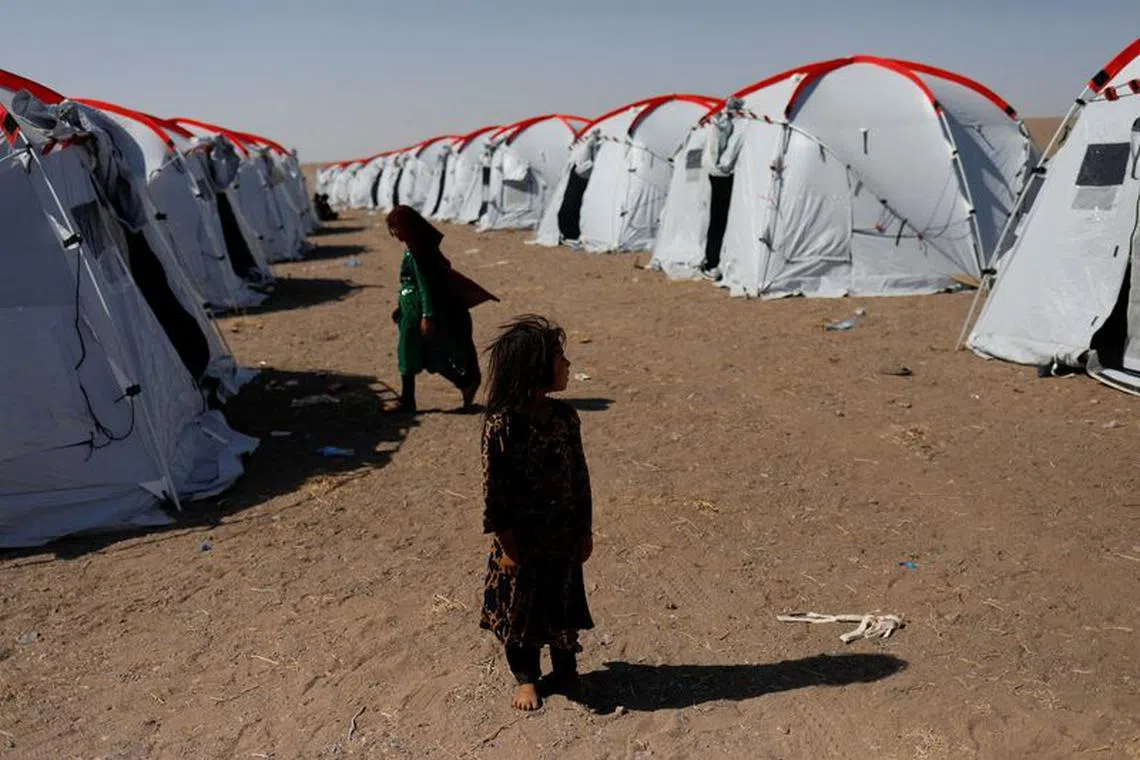Afghanistan quakes a ‘disaster on top of a disaster’: World Food Programme
Sign up now: Get insights on Asia's fast-moving developments

Atefeh, a six-year-old Afghan girl at Afghanistan's Red Crescent camp on Oct 10. She says she lost her father and brother in the recent earthquake,
PHOTO: REUTERS
Follow topic:
KARACHI - The World Food Programme (WFP) on Wednesday called the recent Afghanistan earthquakes a “disaster on top of a disaster”, urging the international community to provide humanitarian aid to the war-torn nation.
Limited aid makes relief work difficult after earthquakes and aftershocks since Saturday rattled the religiously conservative nation.
The tremors killed at least 2,400 people and injured more than 2,000,
“In Afghanistan, this is a disaster on top of a disaster, on top of a disaster, on top of a disaster,” said Mr Philippe Kropf, head of communications at WFP Afghanistan.
“We have 50 million people who do not know where their next meal will come from and the World Food Programme is only able to support three million people due to a massive funding shortfall,” he said in Herat, a north-western province where the WFP has begun distributing rations.
“All the houses are completely flattened” and health centres have been turned into rubble, he added. “Livelihoods have been destroyed.”
The WFP is initially providing each family of seven with 2,100 kilocalories a day for a month and may consider other forms of aid such as cash, he said. To battle malnutrition, it has been distributing high energy biscuits and a special peanut butter.
Breastfeeding women are among the most vulnerable, along with children and pregnant women, he said. “If we can help them prevent malnutrition, that’s how we do it because preventing malnutrition is much cheaper than treating malnutrition.”
Dr Alaa Abouzeid, head of the World Health Organisation’s emergency response in the country, said on Monday that women and children make up two-thirds of the injured in Afghanistan.
Afghanistan’s healthcare system, reliant almost entirely on foreign aid, has faced crippling cuts in the two years since the Taliban took over and much international assistance, which had formed the backbone of the economy, was halted.
Afghans have endured decades of wars, since the fight to drive out Soviet Union military forces from 1979 to 1989, to US efforts to topple the Taliban government after the Sept 11, 2001 attacks, and the Taliban’s victory in 2021.
The United Nations and humanitarian agencies reduced the budget for Afghanistan’s 2023 aid plan to US$3.2 billion (S$4.4 billion) from US$4.6 billion earlier in the year, in the wake of Taliban administration restrictions on female aid workers.
The WFP has already slashed rations and cash assistance from eight million Afghans in 2023, underscoring the severity of financial challenges aid agencies face in what the United Nations considers the world’s worst humanitarian crisis. REUTERS

